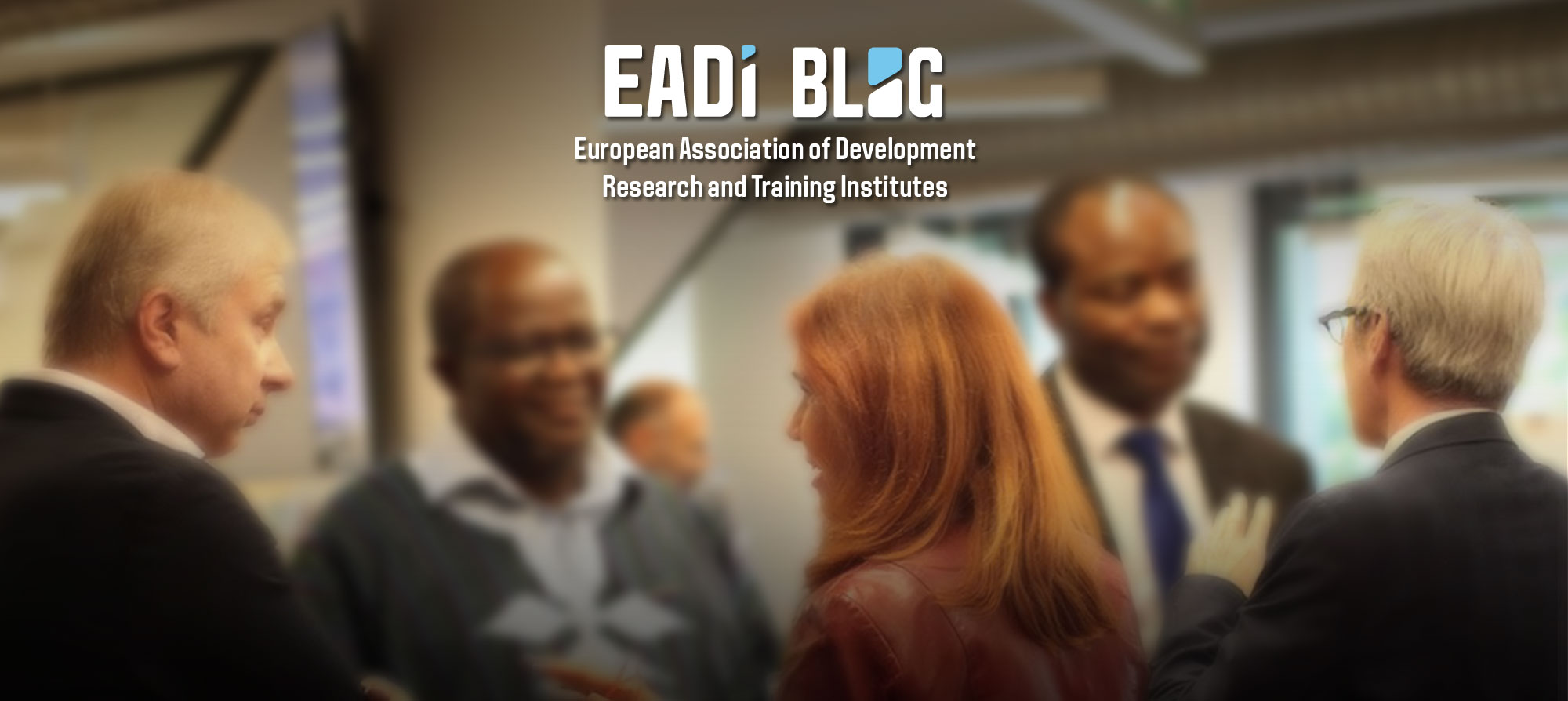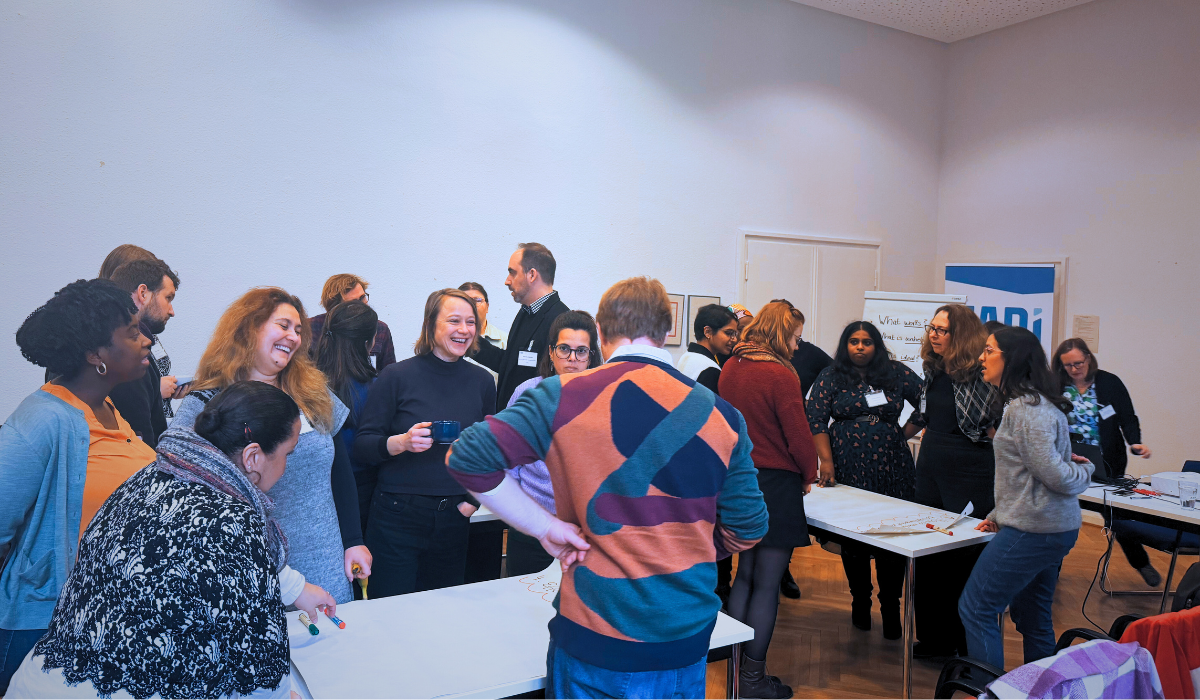By Lize Swartz
The communications landscape around us is changing — seemingly at breakneck speed. Since our last meeting as EADI Research Communications Working Group more than five years ago, especially the online communications environment has all but been transformed. These changes are forcing us to reflect on how we are communicating and whether it’s sufficient, also from a social justice perspective. The recent workshop for EADI members held in Bonn, Germany, was a moment for us to get together and reflect on recent changes and our responses.
Get with the times or fall behind
As the communications environment changes, we as research communications professionals are changing how we communicate scientific research. Sometimes this change takes place naturally. The recent changes to Twitter (X) — a platform long favoured by (development) researchers and research institutions for keeping vital discussions alive online — is a prime example. What we see now is a call coming from within the research community to find alternatives to a platform that no longer aligns to the mission of researchers and research communications professionals. We are not being forced to abandon Twitter; it is a choice that we make.
Fear the algorithm — it does as it pleases (or does it?)
At other times, we don’t have a choice; we are forced to change our communications strategies to prevent what we’re communicating from going unheard, from not making the impact we want it to, or from being misused. At the workshop, several participants highlighted difficulties they were facing when producing content for social media: the algorithms for platforms such as Instagram and Facebook decide which content is visible — and we don’t always know why. Algorithms all but govern social media, one participant observed.
Another recounted that the organization’s Facebook page was disabled because the word “climate” had been used. The word was considered politically inflammatory. The organization didn’t realize that this had happened until they investigated it, and even then, it took some puzzling to determine that it was that specific word that had triggered the freezing of the account. Something similar happened at another organization that had posted political content on TikTok — the account they used was banned from the platform. In both cases, they later knew what had triggered the ban but not how to prevent it.
At other times, the algorithm suppresses or highlights content seemingly at random. Many of us do not fully understand how this works. What we do know is social media platforms want to keep people on them for as long as possible. For this reason, content with links is suppressed because it takes users to another site. Embedding content on these platforms or on website pages might be one way to circumvent this – but this is not always possible, especially when we link to longer texts that simply cannot be posted on social media.
Too much information
This is linked to the problem of oversaturation: there is a wealth of content that gets posted on social media, meaning that content gets ‘lost’. And if the algorithm sends ‘undesired’ content to the bottom of the pile, the chances are even smaller that the post will be seen. How can we deal with this problem? Perhaps cross-posting on social media can ensure that it reaches more people. Researchers themselves could possibly also play a key role, as their online presence complements that of research communications teams and their voices are preferred over the more ‘generic’ voices of those who do so professionally. How to get researchers to want to communicate their research is discussed in another blog article on the workshop that follows this one.
We still need Twitter — but we don’t want to
Getting back to quitting Twitter, moving away from the platform is not as easy as we would imagine it to be. One participant remarked that they use the platform to reach journalists and that they’d simply fail to do so if they stopped using it. There also is not a strong enough alternative to the platform. Several participants had joined BlueSky but have not yet been able to determine whether the platform is useful or not; not many researchers have joined the platform, either.
And until everyone who’s important for our communications efforts has joined an alternative platform like BlueSky (both researchers and our target audiences) — or enough people to start a new community join it — Twitter will probably remain the dominant platform. A coordinated migration by development research and education institutes to a new platform was suggested as one possible way to make this shift, but the loss of followers that had taken several years to amass was identified as one disadvantage of this suggested strategy. And yet again other platforms such as Threads do not allow political content to be posted, something which several of the organizations wish to do.
LinkedIn is more important than ever
The discussion clearly showed the rise of LinkedIn, which not only performs well but is also becoming preferred by (development) researchers and practitioners alike. While other platforms such as Facebook are also used for personal reasons, LinkedIn is used by professionals to find information they need to do their work, one participant commented. This includes what’s happening in the field — new developments and possibly new partners to collaborate with. LinkedIn Groups are also useful for locating epistemic communities and those researchers and practitioners working on particular subjects or in particular fields. One participant shared how she had spent time on LinkedIn scanning groups to (re)post relevant content in.
Accessibility is key, but the digital divide persists
Accessibility is also becoming increasingly important. Videos are being produced with subtitles for those who cannot access the audio, or for those who watch them while commuting, for example. Other platforms remain less accessible; these include podcasts, which like videos require data to listen to that is expensive in many countries (where there is also limited access to Wi-Fi networks). In such contexts, mainstream media – television, radio, and newspapers – are still seen to play an important role.
Building and nurturing relationships
One of the important lessons we learned at the workshop is that communicating is more than simply producing and disseminating content; it is much more than that. One participant commented — and this struck me — that we need to focus not only on the “media” aspect of social media but also on its “social” aspect. We have a responsibility as research communicators to create and nurture social spaces.
Related to this, another participant commented that communication is about building relationships. From this perspective, we need to focus on enduring engagement that means nurturing the social spaces for dialogue we’ve created. Focusing only on spreading content is not enough.
And, last of all, meaningful engagement should be a key priority that drives our communications strategies so that our messages are not only heard but also heeded.
Lize Swartz is an academic blogging specialist, academic editor, and development researcher. She is Editor of Bliss, the blog of the International Institute of Social Studies, where she also conducts PhD research on experiences of and responses to water scarcity in urban contexts.
Image: Taken from the workshop

